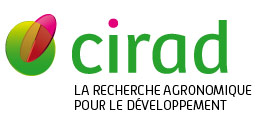Multiple pests' ecological control driven by plant richness in banana agrosystems
Poeydebat C., Carval D., De Lapeyre de Bellaire L., Chabrier C., Vargas R., Daribo M.O., Rodriguez Arias I., Tixier P.. 2016. s.l. : s.n., 2 p.. International Symposium on Agroecological approaches to promote innovative banana production systems, Montpellier, France, 10-14 octobre 2016. 10, 2016-10-10/2016-10-14, Montpellier (France).
Agricultural intensification has led to vegetation simplification and reliance upon phytosanitary products as pest damage became the main contributor to yield losses. Detrimental impacts of pesticides upon health and environment have raised interest for alternative sustainable pest management. Agroecosystem plant diversification may restore ecological pest regulation by modifying the micro-climatic conditions, the diversity and availability of resources and the diversity and fragmentation of habitats. These changes potentially affect life cycles and dispersion of pests and of biological control agents, and food webs. The complexity of ecological interactions in diversified agroecosystems and the multiplicity of pests to which a crop is exposed make the implementation of diversification a challenging objective. A trade-off has to be found between multiple pests' regulation accounting for antagonistic regulation processes and the interaction of damage types at the physiological scale. Using clonal phytometers located in plots distributed along a gradient of plant diversity ranging from monoculture to traditional agroforestry fields, we aimed at determining the factors involved in the regulation of the three main pests of bananas: the banana weevil, Cosmopolites sordidus, the causal agent of black sigatoka, Mycosphaerella fijiensis, and the main plant-parasitic nematodes species, Radopholus similis, Pratylenchus coffeae, Helicotylenchus sp. and Rotylenchulus reniformis.We measured crop biomass production and pests' abundances and damages on each phytometer banana plant. As potential regulatory factors, we measured soil properties, plant diversity and structure, and abundances of trophic groups of soil nematodes' and litter arthropods' communities. Using structural equation modeling, we determined for each pest the relationships between i) between vegetation characteristics and regulatory factors, ii) between regulatory factors and pest abundance and damage, and iii) be
Documents associﺣ۸s
Communication de congrﺣ۷s
Agents Cirad, auteurs de cette publication :
- Carval Dominique — Persyst / UPR GECO
- Chabrier Christian — Persyst / UPR GECO
- Daribo Marie Odette — Persyst / UPR GECO
- De Lapeyre Luc — Persyst / UPR GECO
- Tixier Philippe — Persyst / UPR GECO
